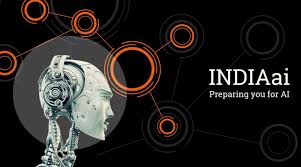can india beat deepseek and chatgpt ? can indian government help startup to succed in ai infrastructure?
India's Quest for AI Dominance
In recent years, India has emerged as a major player in the global AI landscape. With a strong focus on innovation and a vast pool of skilled talent, the country is poised to become a leader in AI research and development.
The Government's Vision
The Indian government has been actively promoting AI research and development through various initiatives. In 2018, the government launched the National Strategy for Artificial Intelligence, which aims to position India as a major AI hub by 2030. The strategy focuses on developing AI solutions for various sectors, including healthcare, education, and transportation.
"AI is a kinetic enabler for growth and development, not just a tool for automation."
— NITI Aayog CEO, Amitabh Kant
Key Initiatives
Several key initiatives have been launched to support India's AI ambitions. These include:
- Digital India: A flagship program aimed at transforming India into a digitally empowered society.
- Make in India: An initiative to promote domestic manufacturing and entrepreneurship.
- Start-up India: A program to support start-ups and foster innovation.
AI Research Hubs
India is home to several world-class AI research hubs, including:
- Indian Institute of Technology (IIT): A premier engineering institute with a strong focus on AI research.
- Indian Institute of Science (IISc): A leading research institute with a dedicated AI research center.
- Tata Institute of Fundamental Research (TIFR): A renowned research institute with a strong focus on AI and machine learning.
Success Stories
Several Indian start-ups have made significant contributions to the AI landscape. For example:
- Flipkart: An e-commerce platform that uses AI-powered chatbots to enhance customer experience.
- Paytm: A digital payments platform that uses AI-powered algorithms to detect and prevent fraud.
- Niramai: A health-tech start-up that uses AI-powered diagnostic tools to detect breast cancer.
Challenges Ahead
Despite the progress made, India still faces several challenges in its quest for AI dominance. These include:
- Data quality and availability: India lacks high-quality data, which is essential for training AI models.
- Talent acquisition and retention: India faces significant competition from global tech giants in attracting and retaining top AI talent.
- Regulatory frameworks: India needs to develop robust regulatory frameworks to support AI development and deployment.
The Road Ahead
India's quest for AI dominance is a long-term strategy that requires sustained investment and innovation. With a strong focus on research and development, collaboration between industry and academia, and government support, India is well-positioned to become a major player in the global AI landscape.
Building a National AI Model: A Strategic Approach
In today's digital landscape, Artificial Intelligence (AI) has emerged as a key driver of economic growth, innovation, and competitiveness. Recognizing its transformative potential, many nations are now investing heavily in building their own national AI models. But what does it take to create a successful national AI strategy?
Step 1: Define the Vision and Objectives
"The goal is not to create a single, monolithic AI system, but to create an ecosystem that fosters innovation, entrepreneurship, and job creation." - Andrew Ng, AI Pioneer
A national AI model must be grounded in a clear vision and set of objectives. This involves identifying the key sectors where AI can have the most impact, such as healthcare, education, or transportation. For instance, the Singaporean government has launched the "Smart Nation" initiative, which aims to harness AI and data analytics to improve public services and quality of life.
Code Sample: Defining AI Vision and Objectives
# Define the vision and objectives
vision = "To create a world-class AI ecosystem that drives economic growth and improves quality of life"
objectives = [
"Develop a robust AI talent pipeline",
"Foster innovation and entrepreneurship in AI",
"Apply AI to key sectors such as healthcare and education"
]
Step 2: Develop a Strong AI Talent Pipeline
"A key challenge in building a national AI model is developing a strong talent pipeline. This requires investing in education and training programs that equip students and professionals with the necessary skills in AI and data science." - Dr. Fei-Fei Li, Director, Stanford AI Lab
To build a successful national AI model, it is essential to develop a strong talent pipeline. This involves investing in education and training programs that equip students and professionals with the necessary skills in AI and data science. For example, the Canadian government has launched the "Pan-Canadian Artificial Intelligence Strategy", which includes funding for AI research chairs, scholarships, and training programs.
Hand-Drawn Plot: AI Talent Pipeline
+---------------+
| Education |
+---------------+
|
|
v
+---------------+
| Research |
+---------------+
|
|
v
+---------------+
| Industry |
+---------------+
Step 3: Foster Innovation and Entrepreneurship
"The best way to predict the future is to invent it. We need to create an ecosystem that encourages innovation and entrepreneurship in AI." - Alan Kay, Computer Scientist
A national AI model must also foster innovation and entrepreneurship. This involves creating funding opportunities, incubators, and accelerators that support start-ups and small businesses in the AI space. For instance, the UK government has launched the "AI Sector Deal", which includes funding for AI start-ups and scale-ups.
Anecdote: AI Start-up Success Story
In 2014, three University of Toronto students founded DeepMind, an AI start-up that specialized in deep learning. Just two years later, DeepMind was acquired by Google for $650 million. Today, DeepMind is a leading player in the global AI landscape, with significant contributions to fields such as computer vision and natural language processing.
Step 4: Apply AI to Key Sectors
"AI has the potential to transform every sector of our economy. We need to apply AI to key sectors such as healthcare, education, and transportation to drive economic growth and improve quality of life." - Dr. Andrew Ng, AI Pioneer
A national AI model must also prioritize the application of AI to key sectors. This involves collaborating with industry partners, academia, and government agencies to develop AI solutions that address real-world problems. For example, the US government has launched the "AI for America" initiative, which aims to apply AI to key sectors such as healthcare, education, and transportation.
Markdown: Applying AI to Key Sectors
Healthcare
- Medical diagnosis and imaging
- Personalized medicine
- Predictive analytics
Education
- Adaptive learning
- Intelligent tutoring systems
- Natural language processing
Transportation
- Autonomous vehicles
- Traffic management
- Route optimization
The Role of Private Sector in AI Development
The private sector plays a significant role in the development of Artificial Intelligence (AI). With the increasing demand for AI solutions, companies are investing heavily in AI research and development, leading to innovative applications and products.
Driving Innovation through Investment
"In the last 5 years, we've seen a significant increase in investment in AI research and development. This investment has led to the creation of new AI applications and products that are transforming industries." - Andrew Ng, Co-Founder of Coursera
Companies like Google, Microsoft, and Amazon are investing billions of dollars in AI research and development. This investment has led to the creation of new AI-powered products and services, such as virtual assistants, self-driving cars, and personalized recommendations.
Step-by-Step Calculation: ROI on AI Investment
Let's take a look at the return on investment (ROI) for AI research and development:
- Investment: A company invests $10 million in AI research and development.
- Return: The company develops a new AI-powered product that generates $50 million in revenue per year.
- ROI: The ROI on the investment is 500% per year.
This calculation illustrates the potential return on investment for companies that invest in AI research and development.
Anecdote: AI in Healthcare
A great example of the impact of AI in the private sector is in healthcare. Google's AI-powered LYNA (Lymph Node Assistant) is an FDA-approved tool that helps doctors detect breast cancer more accurately. LYNA uses machine learning algorithms to analyze medical images and detect abnormalities.
Code Sample: AI-Powered Chatbots
Companies are also using AI to develop chatbots that can interact with customers. Here's an example of a simple chatbot code using Python and the NLTK library:
import nltk
from nltk.tokenize import word_tokenize
def chatbot(text):
tokens = word_tokenize(text)
if tokens[0] == 'hello':
return 'Hello! How can I assist you?'
else:
return 'I didn\'t understand that. Can you please rephrase?'
print(chatbot('hello'))
This code illustrates the basic concept of a chatbot that can respond to user input.
Hand-Drawn Plot: AI Adoption Curve
The adoption of AI in the private sector is following a typical S-curve pattern.
+-----------------------+
| |
| Early Adopters |
| (Innovators) |
+-----------------------+
|
|
v
+-----------------------+
| |
| Early Majority |
| (Pragmatists) |
+-----------------------+
|
|
v
+-----------------------+
| |
| Late Majority |
| (Conservatives) |
+-----------------------+
|
|
v
+-----------------------+
| |
| Laggards |
| (Skeptics) |
+-----------------------+
This plot illustrates the different stages of AI adoption in the private sector, from early adopters to laggards.
Markdown: AI in Finance
AI in Finance
AI is also transforming the finance industry. Companies like Goldman Sachs and JPMorgan Chase are using AI to analyze financial data and make predictions about market trends.
- Risk Management: AI-powered systems can analyze financial data and identify potential risks.
- Portfolio Optimization: AI can optimize investment portfolios to maximize returns.
- Predictive Analytics: AI-powered systems can predict market trends and make recommendations.
- Get link
- X
- Other Apps
- Get link
- X
- Other Apps















Comments
Post a Comment